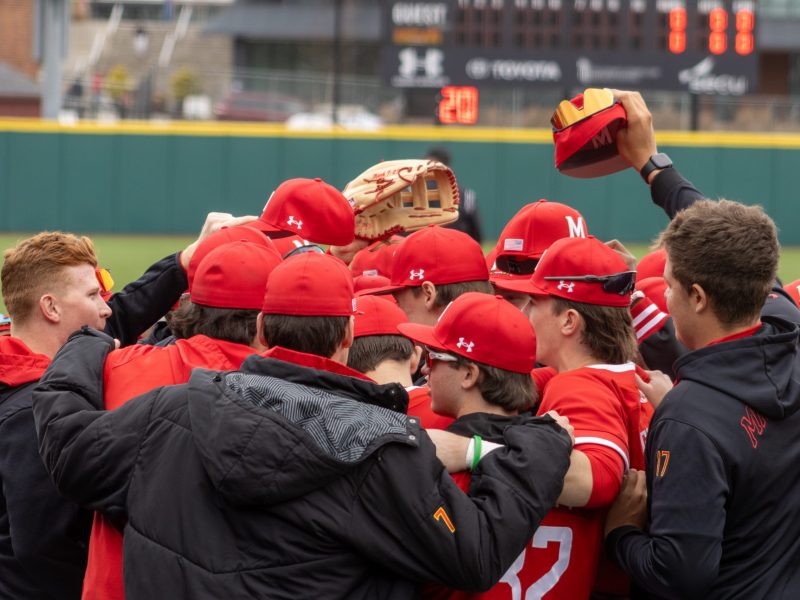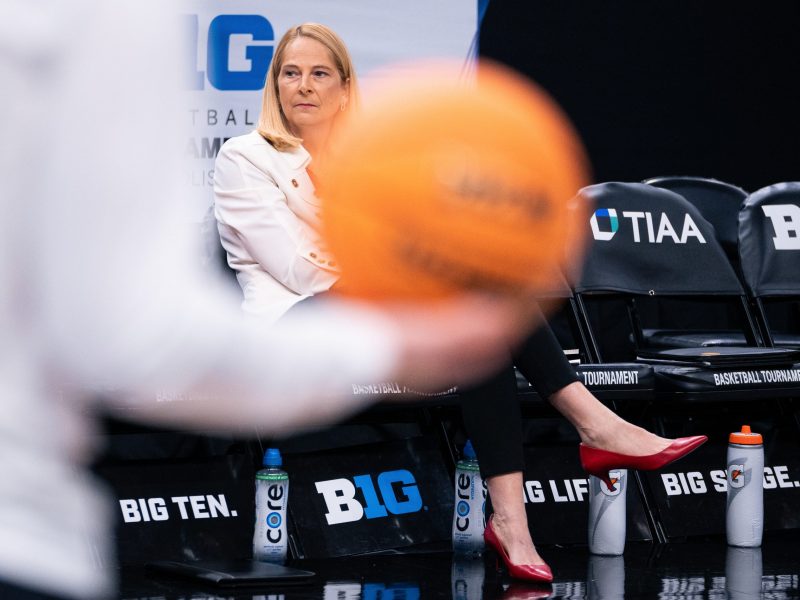A Middletown High School men’s lacrosse player fell to the ground after suffering an injury in the spring of 2014. Valerie Jones, the school’s certified athletic trainer, ran onto the field. Maryland women’s soccer midfielder Sarah Kovalchick, a high school junior at the time, jogged alongside her.
Kovalchick carefully watched as Jones conducted a series of tests. The pair helped the injured starter reach the sideline, and Jones determined he injured his PCL.
After she made the diagnosis, Jones quizzed Kovalchick. She asked what tests Kovalchick saw her complete as the player laid on the field. She wanted to know if there was anything Kovalchick would have done differently. Jones also told Kovalchick to determine whether a visit with a physician would be necessary.
The sequence followed a familiar pattern for Kovalchick, who also played on the women’s soccer team at the time. Unless the soccer team had a game, Kovalchick shadowed Jones at every sporting event she could attend. The sport didn’t matter, and neither did the day of the week.
“She was trying to figure out if she wanted to do physical therapy or athletic training or something of that nature,” Jones said. “You always have to have something to fall back on if you’re an athlete. I never had to ask her to do anything. She’s already there. Just one of those people who is always willing to learn.”
Kovalchick’s experiences working with Jones encouraged her to send an email to the university’s sports medicine department, where she worked as an assistant athletic trainer for the men’s and women’s soccer teams during her first semester on the campus. Though Kovalchick also played intramural soccer during that time, she missed the higher level of competition she saw from the Terps during practices and games.
So she sent several more emails, this time to first-year Terps women’s soccer coach Ray Leone. He gave Kovalchick the opportunity to experience Division I athletics from the playing field while she continued to pursue her career goal.
THE RIGHT FIELD
Until Kovalchick approached her during the spring of her junior year in high school, no one had ever offered Jones assistance.
Jones was familiar with Kovalchick, who visited the school’s trainer with “a foot and leg issue that she was having.” Before leaving, Kovalchick asked if she could get involved.
She always performed well in her science classes, and her parents both have science backgrounds. Kovalchick’s father is a dentist, and her mother holds a doctorate in physiology. She loved science and sports, so she sought a way to combine the two.
Kovalchick, who wants to become a physical therapist, shadowed Jones, asking questions on the sideline and in the training room. She and Jones reviewed special testing, taping and wound care procedure. She was also curious about Jones’ experiences when she first started working in the industry.
“I knew I couldn’t do soccer as a career, so I thought, ‘What’s the next closest thing?'” Kovalchick said. “I love the mental aspect of sport. I thought it was a combo of everything I love, which is sport and helping people.”
Despite earning first-team All-Central Maryland Conference honors in 2013 and 2014, Kovalchick also began applying to various athletic training internships, which Jones recommended she explore.
One of the places she applied to was Pivot Physical Therapy, a sports medicine clinic in Frederick. Kovalchick’s prior experience made her an easy hire, said Preston Anderson, who ended up serving as her mentor during the experience.
“She would almost read your mind and knew what you needed and had it ready for whenever you needed it without you asking,” Anderson said. “We’ve had some interns in the past that haven’t been able to do that.”
MAKING A MARK
Kovalchick decided to attend this university because of its kinesiology program. But she wasn’t playing soccer at the time, so her parents recommended she explore other alternatives. She sought an internship comparable to the two she completed in high school.
She sent several emails to faculty within Maryland’s sports medicine department, though she wasn’t expecting a response. But a week before Kovalchick moved to College Park, she was working with the university’s soccer programs.
“We usually don’t have incoming freshmen involved because they don’t hear about the program until they start taking kinesiology classes,” said Amelia Sesma, the Maryland men’s lacrosse team’s head athletic trainer who Kovalchick worked under. “She hit the ground running, which doesn’t usually happen. She was always willing to help out with different games and events.”
During her first week at this university, Kovalchick shadowed other trainers and set up water coolers and equipment. She then became responsible for setting up pre- and post-game treatment in addition to staying up to date with the status of injured players. She assumed a lot of the same roles while working with Sesma and the men’s lacrosse team in the spring.
“I was star struck by this big atmosphere,” Kovalchick said. “My high school’s training room was like a janitor’s closet. To be able to do all that already, it was amazing. I was in awe of it all.”
On men’s lacrosse game days, Kovalchick arrived two hours before the game started to set up ice and water. As games progressed, she ensured every player was hydrated.
After each contest, Kovalchick’s tasks depended on the statuses of different players. She set each player up on machines for post-treatment, organized tape and followed up with injured athletes.
“It was just cool being a part of the team,” Kovalchick said. “Being a part of that journey was awesome, especially since they were the team that went to the NCAA championship. They’ll let you help them. Developing that relationship was really cool.”
But as the men’s lacrosse team’s season ended, Kovalchick told Sesma she missed playing soccer. Despite playing intramural soccer, Kovalchick wanted an opportunity to compete at the Division I level.
Sesma recommended Kovalchick reach out to Leone, who was hired in January.
“[Amelia] was like ‘A bunch of people are transferring from the team, and they don’t really have a lot of people,'” Kovalchick said. “I didn’t think much of it at first, but I realized I really did miss soccer and this was a great opportunity.”
Shortly after Kovalchick sent Leone several emails and her high school highlight tapes, he insisted she come to College Park to fill out the forms required to have a walk-on tryout.
When Kovalchick drove to campus to submit the forms, Leone requested that she join the team’s practice. She coincidentally had cleats in her trunk. Kovalchick’s speed of play and summer experience playing with other collegiate athletes stood out, Leone said.
Three days later, she was on the team.
“It’s really risky to put yourself on the line like that and see what you could do in a tryout,” midfielder Hope Gouterman said. “Right out of the gate, she demonstrated a type of confidence you don’t normally see. She made an immediate impact and you could tell she wanted to improve for herself and for the team.”
Though she has appeared in only three of Maryland’s games this season, Kovalchick has a specific role. Before and after games, she is the first to play music and start dancing in the locker room. Gouterman said her positivity is contagious.
“For me, it was we’re not just taking her because she’s a nice kid,” Leone said. “She plays quickly and we want to play that way going forward. She plays within herself. Not many people do that. She just doesn’t get nervous. She’ll be a good doctor.”
Now a player on the women’s soccer team she worked with last fall, Kovalchick is often in the training room with other interns and certified athletic trainers. On occasion, she will set up the treatment equipment for herself or her teammates before and after games.
It’s the same two-sided perspective she had in high school.
“[Men’s lacrosse coach John Tillman] said, ‘It’s weird seeing you get the treatment now,'” Kovalchick said. “I’m on cloud nine. I don’t know how I did all this during my first two years. I sent a few emails, didn’t expect to get a reply, got a reply and got the opportunity. It’s surreal.”


